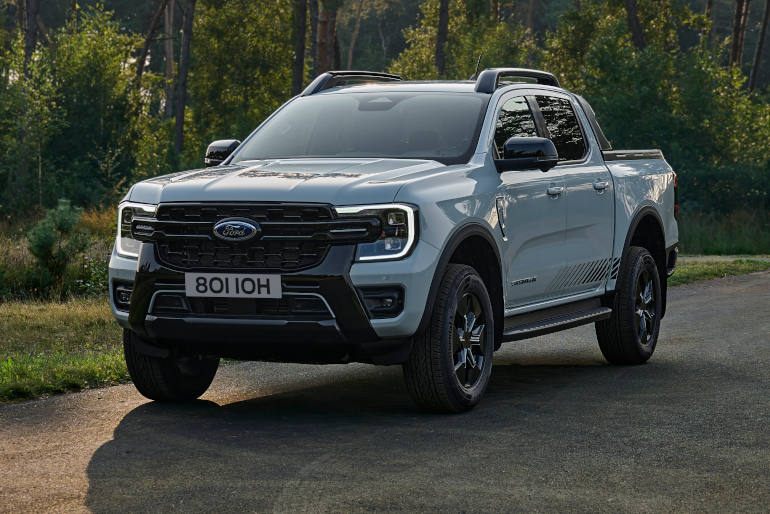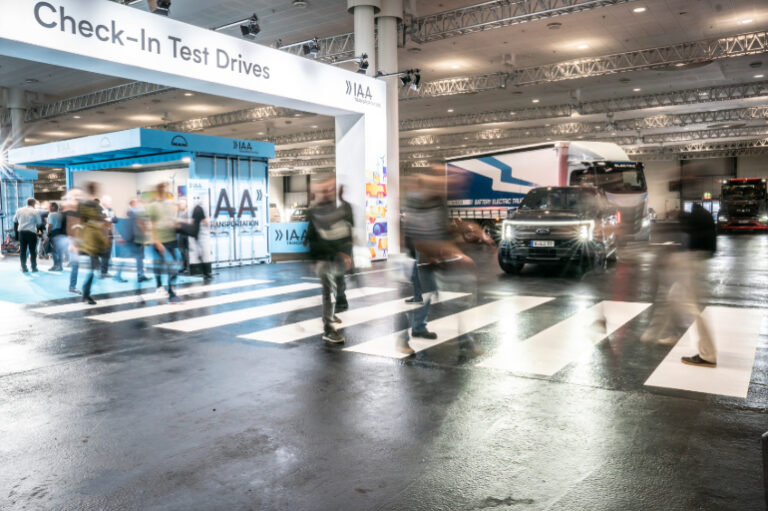The IAA Transportation show held in Hanover from 17-22 September saw record crowds, with 1,700 exhibitors, 145,000 visitors, 6,300 test drives and 145 world premieres across five action-packed days.
The biannual show is the largest commercial vehicle show in the world as truck manufacturers, parts suppliers, technology providers, industry leaders and policy makers converge in Hanover to check out the latest innovations.
This year’s show was focused around the future of the commercial vehicle industry, with a dizzying array of low- or zero-emission technologies on display. From battery-electric trucks to hydrogen vans, the software solutions of tomorrow and even an indoor test drive loop – the show had something for everyone.
Here is our wrap-up of the top vehicles on display at IAA Transportation, in no particular order!
Around the Benz
Daimler Truck rolled out its carbon-neutral range for IAA, but the focus was on long-distance transport with its new Mercedes-Benz eActros 600 taking centre stage.
The eActros 600 features 621kWh of battery capacity and is capable of a loaded driving range of up to 500km. Mercedes-Benz says that with intermittent ‘megawatt’ fast charging, completed while drivers take a rest break, the eActros 600 is capable of travelling more than 1,000km each day.
If you think the eActros 600 looks futuristic, that’s because it is. The aerodynamic cab design features a closed and rounded-off front hood, with underbody panelling and various air deflectors. Mercedes-Benz even extended the front by 80mm to achieve the shape required, using air-flow simulation and wind tunnel testing to optimise aerodynamics.
Journalists from 24 countries voted the eActros 600 the ‘International Truck of the Year 2025’ too, with Mercedes-Benz Trucks CEO, Karin Rådström, receiving the award at IAA Transportation 2024.
“We are proud and excited that the jury selected our eActros 600 as the ‘International Truck of the year 2025’,” said Ms Rådström.
“Almost all members of the jury have already spent time behind the wheel, testing the eActros 600 on the roads throughout Europe – so they had the opportunity to personally experience the truck’s ability to perform. Today is a proud day for the teams that have worked so hard in the last years to make this truck a leader in the market.”

Alternate fuel frenzy
Scania showcased its latest trucks and buses at IAA Transportation, with a selection of diesel, electric and alternative fuel powertrains on show.
The Swedish truck maker has pioneered the use of biodiesel in its heavy truck range, bringing various alternative fuel options to the show – and yes, the famed Scania V8 was on display!
Among the trucks on show was a biogas-powered R 460 prime mover, which uses compressed biogas (CBG) on one side and liquefied biogas (LBG) on the other, and apparently it’s quieter than an equivalent diesel model too. With a CO2 saving of up to 90 per cent and driving range of up to 1,800 when using LBG, this model promises serious long-haul potential.
Another innovative example was Scania’s EM C1-4 electric powertrain shown in one of its trucks, with a huge battery capacity of 728 kW. This capacity means that a 40-tonne truck would have a range of at least 530 kilometres before it needs to be charged.
The system features one electric motor, four gears and is available in no less than five different power levels (the one on display was the 400 kW version). The EM C1-4 will be the volume powertrain in Scania’s portfolio of BEVs and has the potential to power a broad variety of applications. Scania likens the powertrain its equivalent 13-litre combustion engine.
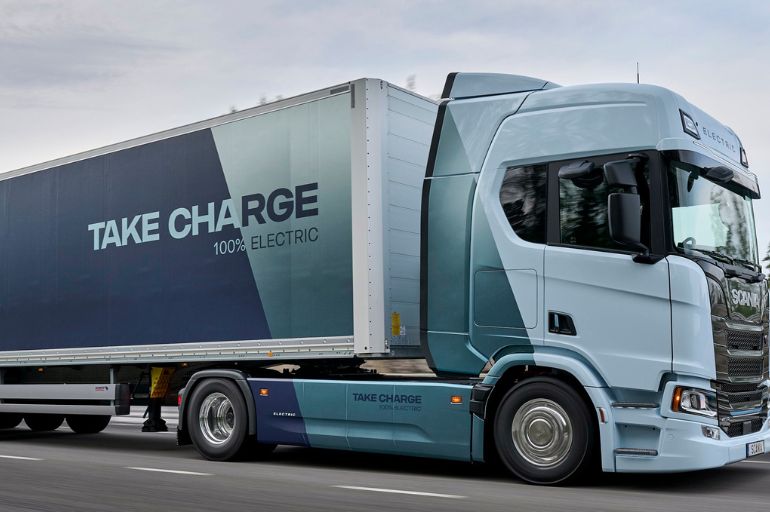
Clean Swedes
Volvo Trucks showed an impressive eight-truck line-up at IAA Transportation 2024, featuring battery-electric powertrains, fuel cells and renewable fuels in combustion engines – all part of a bigger picture strategy that covers all bases as the transport industry decarbonises.
The new Volvo FH Aero range was on display, recently launched for Europe, Asia and Africa with both electric- and biofuel-powered variants. Volvo also rolled out its new FM Low Entry cab, which is the brand’s first truck developed with only a battery-electric powertrain. Lastly, Volvo Trucks showed its fuel cell test truck, hinting that hydrogen-based technologies will reach customers before the end of the decade.
Several of the Volvo models at IAA were fitted with its new Camera Monitor System (CMS), which brings benefits both in terms of fuel savings thanks to improved aerodynamics, but also enhanced safety through better visibility.
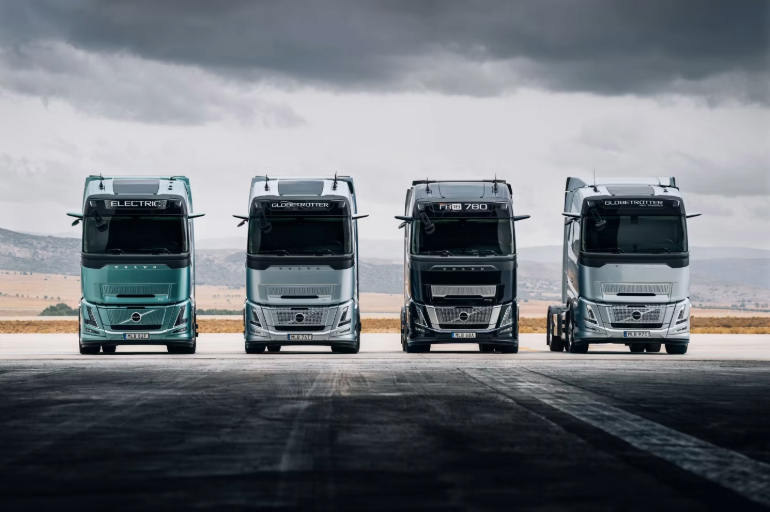
Groovy eMoovy
Hyundai debuted the first vehicle from its global eLCV platform destined for European markets in partnership with IVECO, with the IVECO-badged ‘eMoovy’ electric van.
The eMoovy combines Hyundai’s EV chassis-cab-based platform with IVECO’s cargo compartment, utilising an 800V system for ultra-fast charging. Hyundai quotes a maximum range of up to 320km, with ultra-fast charging capabilities – taking just 10 minutes to provide an additional 100km of range.
“This innovative vehicle showcases Hyundai and IVECO’s shared commitment towards a carbon-neutral future,” said Hyundai Motor Company Executive Vice President and Head of Global Commercial Vehicle & Hydrogen Business, Ken Ramírez.
“By leveraging Hyundai’s pioneering global eLCV platform, we aim to advance EV mobility technology with IVECO’s European expertise to position eMoovy as the leading transport platform that can transform the market.”
After forming the partnership in 2022, Hyundai and IVECO unveiled the first IVECO eDaily fuel cell electric vehicle at IAA Transportation 2022, followed by the IVECO BUS E-WAY H2 at Busworld 2023. Earlier this year the duo announced a supply agreement for an IVECO-badged eLCV for Europe, which is how the eMoovy was born.
“This launch represents a further step forward in our partnership, as we continue to leverage our respective know-how and advanced technologies to drive progress towards our shared objective of accelerating the transition to net zero carbon,” said Iveco Group President Truck Business Unit, Luca Sra.
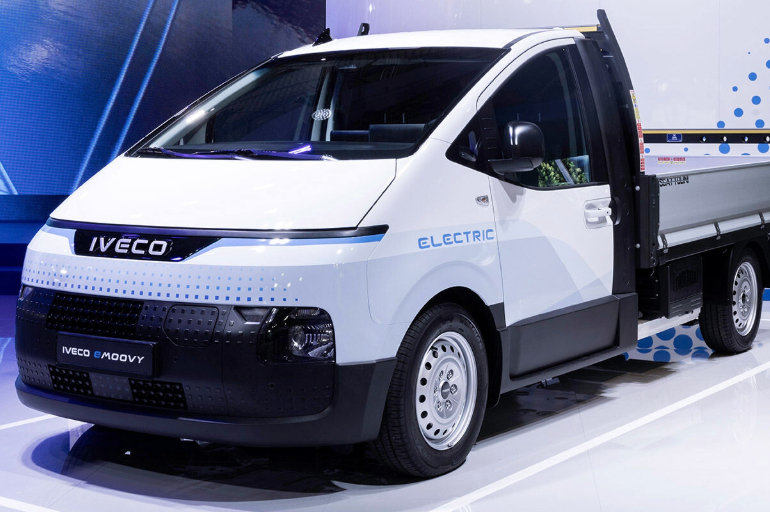
MAN of the hour
MAN Truck & Bus unveiled an exciting array of electric, hydrogen and diesel trucks at the show, also winning the ‘Truck Innovation Award 2025’ for its hTGX hydrogen-powered combustion truck.
The truck-maker premiered the new 12-tonne eTGL truck for the first time, aimed at light distribution transport with a range of up to 235km and payload of up to 6,600kg. It also features fast-charging, which can be completed in around 30 minutes.
MAN also offers the larger 18- and 28-tonne eTGX and eTGS models, with three, four, five or six variably positionable batteries and all-electric power of up to 544hp.
The truck-maker also presented a layout with a seventh high-voltage battery for the MAN eTGX 6×2 chassis for the first time at IAA. With a capacity of 623 kWh, it offers a range of around 650km.
MAN will now offer electric trucks ranging from 12- to 50-tonnes, and the manufacturer says it already has around 2,300 orders for its eTGX and eTGS models.
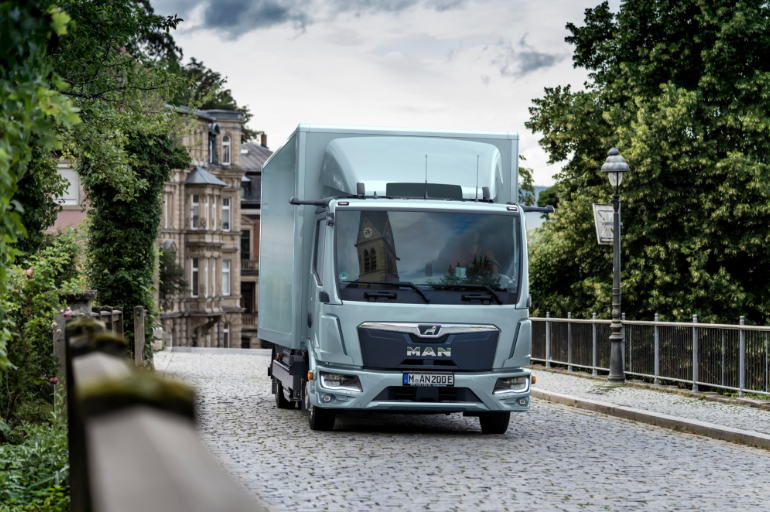
Master stroke
Renault unveiled its Master H2-Tech at IAA Transportation 2024, which is the result of its ‘HYVIA’ joint venture with hydrogen solutions provider Plug, expected to be launched in Europe towards the end of 2025.
When the HYVIA collaboration was formed back in 2021 it intended to be first-to-market with turnkey hydrogen mobility solutions including light commercial vehicles with fuel cells, hydrogen charging stations, supply of carbon-free hydrogen, maintenance and fleet management.
Fast-forward three years and the Master H2-Tech prototype is here, boasting a 700km range and five-minute refuelling time.
According to HYVIA, the hydrogen architecture is fully integrated into the vehicle platform which allows the Master to retain a full load volume and payload. The new-generation fuel cell van will be offered with a choice of either a 7.5 or 9.5kg fuel tank, depending on range requirements.
The Master H2-Tech will be built at Renault’s Batilly plant in France from the end of 2025, and will be supported with the supply of carbon-free hydrogen thanks to Plug and the nearby HYVIA plant in Flins.
“It’s a great source of satisfaction for all HYVIA teams to be able to preview the prototype of the hydrogen version of the new Renault Master, which will be on the road by the end of 2025,” said HYVIA CEO, Nicolas Champetier.
“This major innovation is the fruit of over 3 years’ hard collective work, in partnership with Renault and Plug. HYVIA is thus demonstrating its ability to develop pioneering technologies, while at the same time initiating the deployment of emerging hydrogen ecosystems in Europe.”
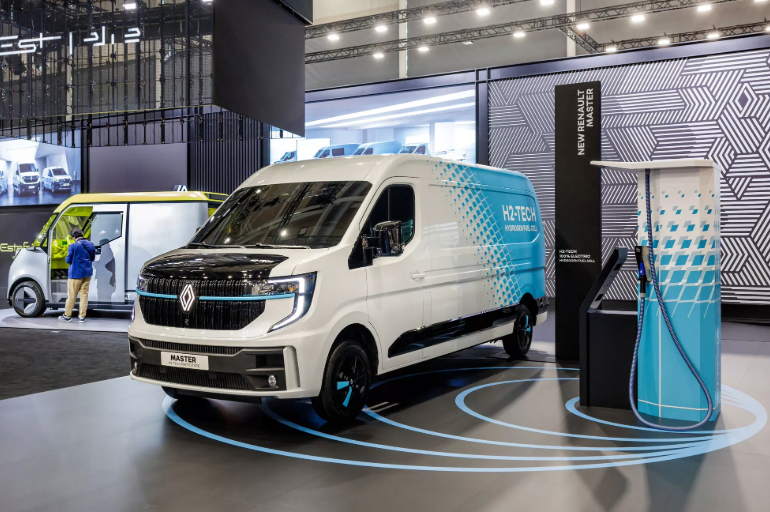
PHEV favourite
Australia’s top-selling car, the Ford Ranger, is on its way with plug-in power by mid-2025.
Ford unveiled its Ranger PHEV model to a global audience at IAA Transportation 2024, after teasing punters with news of the announcement in the lead up.
The Ford Ranger PHEV combines a 2.3-litre turbocharged four-cylinder EcoBoost petrol engine with a 75kW electric motor and 11.8kWh battery that can be charged externally or via the petrol engine while driving.
Ford has coupled the system with the same 10-speed automatic transmission it uses across the Ranger lineup, with the same electronically controlled two-speed transfer case (offering 2H, 4A, 4H and 4L), selectable drive modes and rear locking differential.
Good news for Ranger-loving Australians is that the hybrid model can still tow a full 3500kg, while boasting more than 45 kilometres of electric-only driving range.
“The Ranger PHEV delivers all the versatility and capability people expect from a Ranger,” said Ford Motor Company Chief Engineer of Ranger Plug-in Hybrid, Rob Sharples.
“It can tackle tough terrain, tow a trailer with ease, be driven in town as an EV or, thanks to Pro Power Onboard, be used as a mobile power plant when you’re off grid.”
The Ranger PHEV is good news for fleet managers, who can now purchase their favourite ute while reducing CO2 emissions.
